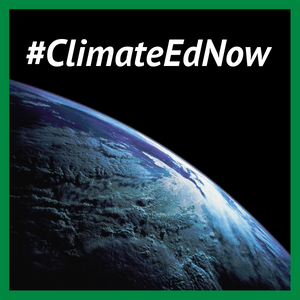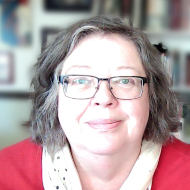 Students are curious. They want to know what is happening to the world around them when they see smoke from multiple forest fires filling the air or experience a heat dome which brings temperatures to 116 degrees, making it unsafe to be outside. They want to know what will happen to the snowpack-dependent water that they drink when they can see that Mt. Hood’s glaciers are retreating. Students do not need to have lived a long life to know that things are changing in their world, their city, their home.
Students are curious. They want to know what is happening to the world around them when they see smoke from multiple forest fires filling the air or experience a heat dome which brings temperatures to 116 degrees, making it unsafe to be outside. They want to know what will happen to the snowpack-dependent water that they drink when they can see that Mt. Hood’s glaciers are retreating. Students do not need to have lived a long life to know that things are changing in their world, their city, their home.
Portland Public School District (PPS) students have been making their voices heard through a series of actions. They want change. They want it now. In 2016, students joined community members and Portland Public School (PPS) teachers by going to our school board to share their passion and sense of urgency, and to demand opportunities to learn about climate change and climate justice. Our district listened and responded by passing a resolution to provide climate change and climate justice instructional resources for every grade level. This resolution begins by stating:
At a time when the science of global warming has prompted governments around the world to begin redefining our economies and to call for an end to the fossil fuel era, it is time for school districts to redefine what it means to educate students for a future of certain climate change. Climate literacy is essential for the success of Portland Public Schools students, both as members of their communities and citizens of the world.
Students also testified in support of our Climate Crisis Response, Climate Justice, and Sustainable Practices Policy, which was passed on March 1, 2022, by our school board. We created a Climate Justice Youth advisory group to keep us informed on what is important to students, so we can take action appropriately. Our students have participated in multiple global climate strikes. PPS has developed procedures that ensure student safety during these events, so they can participate — and they do in the thousands. We have to teach them how to make their voices heard. We need to teach students how to be activists. As change agents, they must be responsible stewards of the environment and knowledgeable about climate justice issues.
In the summer of 2020, students comprised the largest proportion of the design team that created a project-based Climate Change–Climate Justice elective course that is now taught at all of our high schools. At some schools, students co-plan and co-teach the course with their teacher. Capstone projects for this course have included the creation of a climate change or climate justice community or school event, creating a piece of art, music, documentary, article, or blog, working with a community partner on a project, or presenting a project or design solution that they created. When we teach students how to be inclusive and collaborative problem solvers, life-long learners, and agents of change, they rise to the challenge.
It is our job as a school district to provide these opportunities for our students. We need to listen to them, include them in our decision-making, and help them to find their voices so we can create solutions that will make the world a better place. We need to do this together.
Read other essays from our #ClimateEdNow series.

 Students are curious. They want to know what is happening to the world around them when they see smoke from multiple forest fires filling the air or experience a heat dome which brings temperatures to 116 degrees, making it unsafe to be outside. They want to know what will happen to the snowpack-dependent water that they drink when they can see that Mt. Hood’s glaciers are retreating. Students do not need to have lived a long life to know that things are changing in their world, their city, their home.
Students are curious. They want to know what is happening to the world around them when they see smoke from multiple forest fires filling the air or experience a heat dome which brings temperatures to 116 degrees, making it unsafe to be outside. They want to know what will happen to the snowpack-dependent water that they drink when they can see that Mt. Hood’s glaciers are retreating. Students do not need to have lived a long life to know that things are changing in their world, their city, their home.